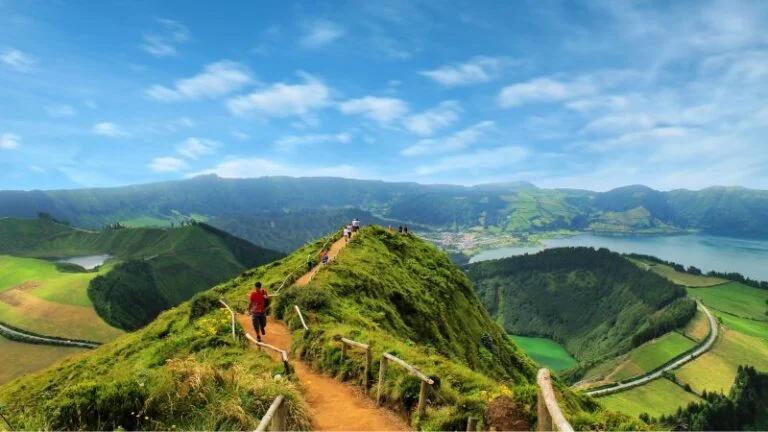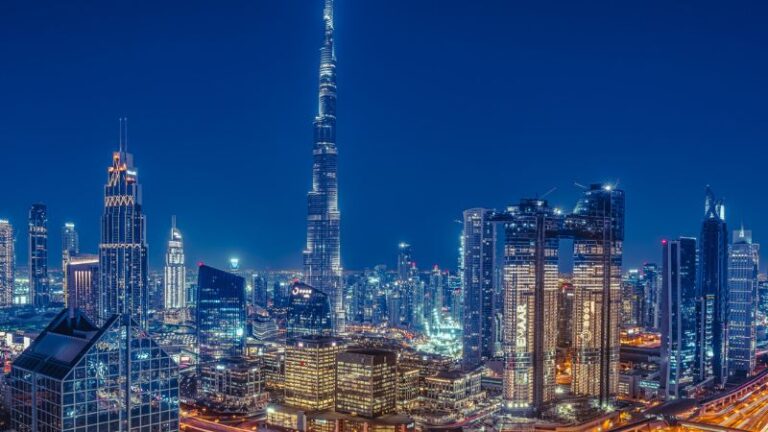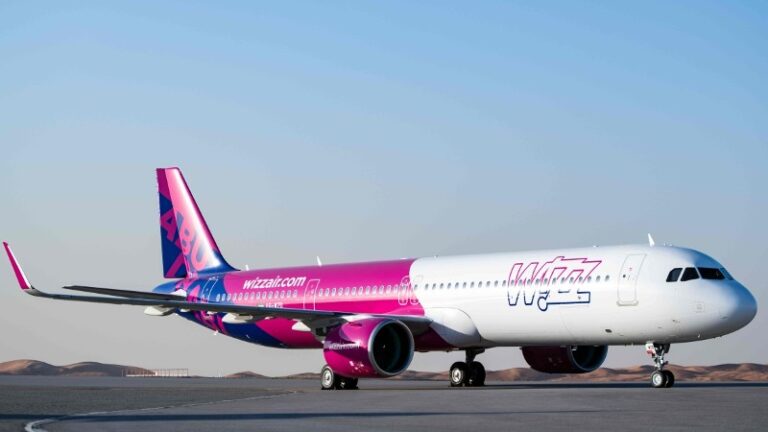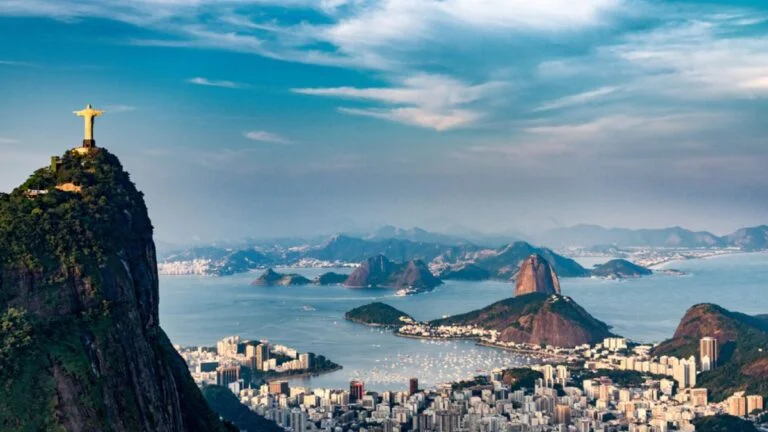50 Facts About Germany You Need to Know Before Traveling There
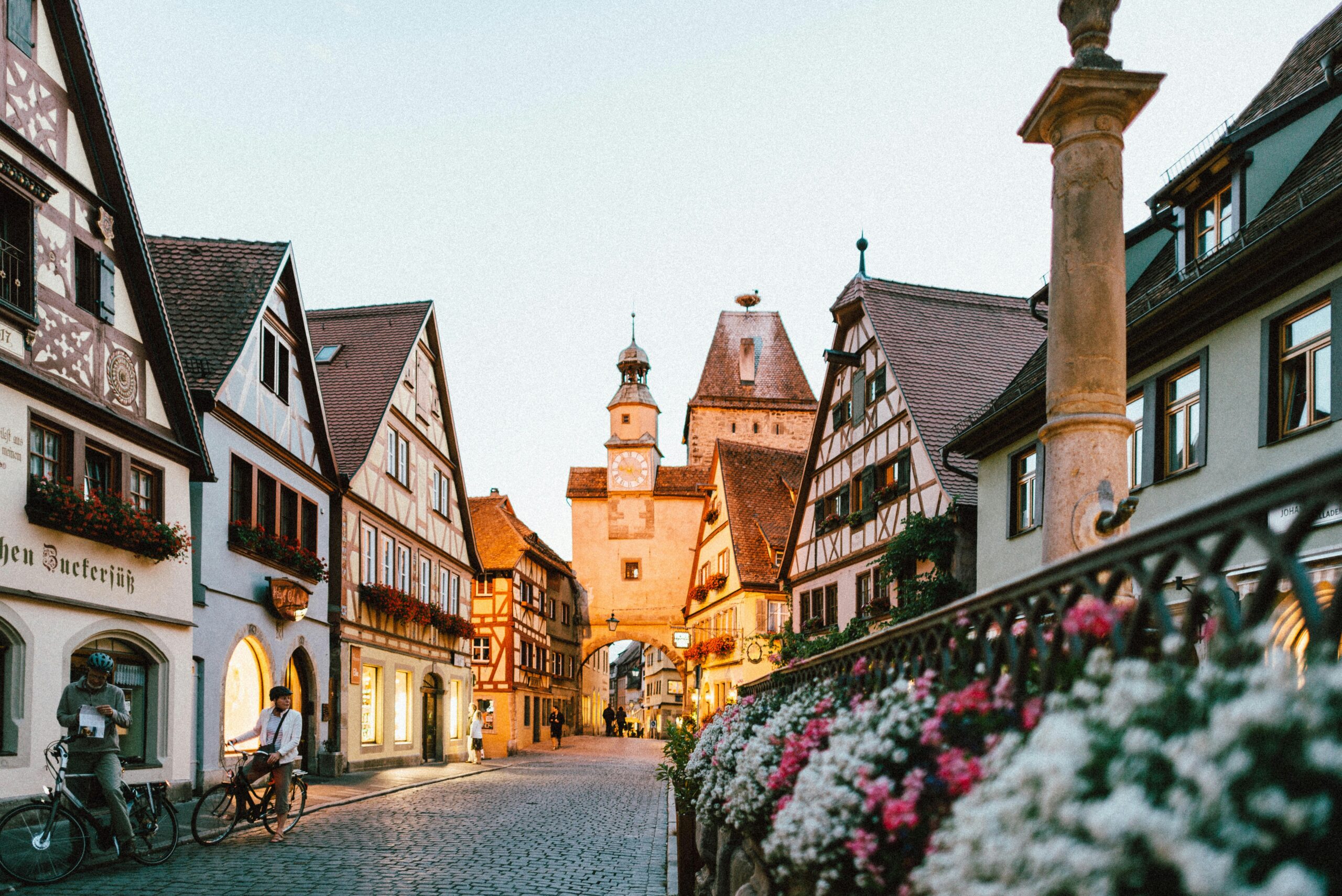
As participants in Amazon Associates and other programs, we earn from qualifying purchases. This comes at no additional cost to you. For more details, see our Affiliate Disclosure.
Germany, a country renowned for its rich history, diverse culture, and technological advancements, offers a unique blend of old-world charm and modern efficiency. From its enchanting castles nestled in lush landscapes to its cutting-edge cities pulsating with creativity and innovation, Germany is a destination that captivates the imagination of travelers. Before you embark on your journey to this fascinating country, there are 50 essential facts you need to know. These facts will not only enrich your travel experience but also deepen your appreciation for the nation’s heritage, cuisine, customs, and contributions to the world. Let’s dive into these insightful tidbits that will prepare you for an unforgettable adventure in Germany.
1. Germany’s Geographical Diversity
Germany boasts an extraordinary geographical diversity that can enchant any traveler. From the wind-swept shores of the North Sea to the majestic peaks of the Alps in the south, every region has its unique landscape and climate. The rolling hills of the Rhine Valley, dotted with vineyards, contrast sharply with the flat, agricultural expanses of northern Germany. This diversity not only shapes the country’s natural beauty and outdoor activities but also influences the cultural and culinary traditions of each region, making Germany a mosaic of experiences.
2. The Autobahn: No Speed Limit Zones
The Autobahn, Germany’s federal highway system, is famed worldwide for its sections without speed limits. While not all stretches are unrestricted, those that are offer drivers the exhilarating experience of legally pushing their vehicles to the limit. The Autobahn is a symbol of German engineering and efficiency, designed with safety in mind, featuring multiple lanes, gentle curves, and wide shoulders. This network reflects the country’s love for cars and driving, embodying a culture where precision and freedom coexist on the road.
3. The Bread Capital of the World
Germany could easily be crowned the bread capital of the world, with over 3,200 recognized varieties of bread. From dense, dark rye breads to fluffy Bavarian pretzels, the diversity is staggering. German bakeries take their craft seriously, often using traditional recipes that have been passed down through generations. This abundance and variety reflect the importance of bread in German cuisine and culture, where it’s not just food but a symbol of home and comfort.
4. Germany’s Historical Castles and Palaces
Germany’s landscape is dotted with over 20,000 castles and palaces, ranging from medieval fortresses to opulent baroque palaces. These structures whisper stories of the past, from the fairy-tale Neuschwanstein Castle that inspired Disney to the imposing Heidelberg Castle, which offers breathtaking views of the Neckar river valley. Visiting these historical sites offers a glimpse into Germany’s rich history, showcasing the architectural prowess and the cultural heritage of the various regions.
5. Oktoberfest: The World’s Largest Beer Festival
Oktoberfest in Munich is not just a beer festival; it’s a global phenomenon celebrating Bavarian culture, food, and, especially, beer. Held annually from late September to the first Sunday in October, it attracts millions of visitors from around the world. With its lively beer tents, traditional lederhosen and dirndls, and an array of Bavarian delicacies, Oktoberfest offers an unforgettable experience. It’s a testament to the German knack for combining festivity with tradition, making it a must-visit for anyone exploring Germany in the fall.
6. The Black Forest: A Fairy Tale Landscape
The Black Forest, or Schwarzwald in German, is a picturesque region in southwestern Germany, known for its dense, evergreen forests and quaint villages. It’s a realm that seems lifted straight from a fairy tale, with its thick woods, serene lakes, and traditional half-timbered houses. The Black Forest is not just a haven for nature lovers and hikers but also the birthplace of the world-renowned cuckoo clocks. This enchanting landscape has inspired countless myths, legends, and stories, including some of the Grimm Brothers’ most famous fairy tales.
7. The Berlin Wall: A Symbol of Division and Unity
The Berlin Wall, once a concrete manifestation of the Cold War divide, now stands as a symbol of unity and peace. Erected in 1961, it physically and ideologically divided East and West Berlin until its fall in 1989. Today, remnants of the wall, especially the East Side Gallery, serve as a powerful reminder of the past struggles for freedom. The wall’s history is integral to understanding not only Germany’s journey towards reunification but also the broader quest for global peace and democracy.
8. German: The Official Language
German, with its various dialects and rich vocabulary, is the official language of Germany. It is known for its compound words, precise grammar, and expressive capacity. German is not only spoken in Germany but also in Austria, parts of Switzerland, and other neighboring countries, making it a significant language in Central Europe. Learning a few phrases can greatly enhance your experience in Germany, opening up its culture, history, and people in a more intimate and meaningful way.
9. Germany’s Contributions to Classical Music
Germany’s contributions to classical music are unparalleled, with the country being the birthplace of some of the most legendary composers in history, such as Bach, Beethoven, Brahms, and Wagner. These composers have left an indelible mark on the world of music, with their works still widely performed and celebrated today. Germany continues to honor this rich musical heritage through its world-class orchestras, opera houses, and music festivals, making it a pilgrimage site for classical music enthusiasts.
10. The Tradition of Christmas Markets
The tradition of Christmas markets in Germany dates back to the Middle Ages, offering a festive way to prepare for the holiday season. These markets, found in town squares across the country from late November, are filled with stalls selling handmade crafts, warm drinks, and traditional German holiday treats like Stollen and Lebkuchen. The twinkling lights, festive decorations, and the scent of mulled wine create a magical atmosphere, making German Christmas markets a quintessential holiday experience.
11. Environmental Leadership and Green Energy
Germany is a global leader in environmental protection and the transition to green energy. The country’s ambitious policies and initiatives, such as the Energiewende (energy transition), aim to reduce carbon emissions by promoting renewable energy sources like wind and solar power. Germany’s commitment to sustainability extends to its transportation, waste management, and conservation efforts, reflecting a societal commitment to protecting the planet for future generations.
12. The Importance of Recycling
Recycling is taken very seriously in Germany, with a comprehensive system that sorts waste into various categories for recycling. The country’s dedication to reducing waste and promoting sustainability is evident in its high recycling rates, one of the highest in the world. This commitment to environmental stewardship is a model for other nations, showcasing how systematic recycling can significantly impact waste management and conservation efforts.
13. A Leader in Technological Innovation
Germany stands at the forefront of technological innovation, particularly in the fields of engineering, automotive, and renewable energy technologies. Home to world-renowned companies like Siemens, Volkswagen, and Bosch, Germany is synonymous with high-quality, precision engineering. This culture of innovation is supported by a robust educational system and research institutions, driving advancements that continue to shape the global technological landscape.
14. German Cuisine: Beyond Bratwurst and Beer
While bratwurst and beer are iconic elements of German cuisine, the country’s culinary landscape is much more diverse and rich. Each region has its specialties, from the seafood dishes of the North to the hearty, meat-based meals of Bavaria. German cuisine also includes a variety of bread, cheeses, and must-try desserts like Black Forest cake. This diversity reflects the country’s agricultural heritage and regional variations, offering something delicious for every palate.
15. Public Transport: Efficiency at Its Best
Germany’s public transportation system is renowned for its efficiency, punctuality, and coverage. The country offers an extensive network of trains, buses, and trams that make it easy to explore both urban and rural areas. The Deutsche Bahn, Germany’s national railway company, provides high-speed train services connecting major cities, while local transportation options offer convenient access to even the most remote regions. This well-organized system is a testament to Germany’s commitment to accessibility and environmental sustainability.
16. Germany’s Educational Excellence
Germany is known for its high-quality education system, offering rigorous and comprehensive schooling from early childhood through to university level. German universities, particularly in the fields of engineering, science, and humanities, are recognized globally for their research and academic standards. Furthermore, the country’s dual vocational training system combines theoretical education with practical apprenticeships, preparing students effectively for the workforce. This emphasis on education underpins Germany’s reputation for innovation and skilled labor.
17. A Nation of Inventors and Innovators
Germany’s history is rich with inventors and innovations that have had a profound impact on the world. From the printing press by Johannes Gutenberg to the automobile by Karl Benz, German inventiveness has shaped various facets of modern society. This tradition of innovation continues today, with German researchers and companies at the forefront of fields such as renewable energy, medicine, and digital technology. The country’s culture of research and development, coupled with its strong patent system, fosters an environment where innovation thrives.
18. The Euro: Germany’s Currency
Since 2002, the euro (€) has been the official currency of Germany, replacing the Deutsche Mark. As Europe’s largest economy, Germany plays a pivotal role in the Eurozone, influencing fiscal policies and economic strategies within the European Union. The transition to the euro has facilitated easier travel and trade among member countries, strengthening Germany’s position as a central hub in the European market. The euro symbolizes not only Germany’s economic strength but also its commitment to European integration.
19. World War II History Sites
Germany is home to numerous sites that bear witness to the tumultuous events of World War II. From the haunting remains of concentration camps to memorials and museums dedicated to the victims of the war, these sites serve as poignant reminders of the past. Visiting these locations offers a solemn opportunity to reflect on the horrors of war and the importance of peace and reconciliation. Germany’s transparent approach to its history encourages a deeper understanding of the impact of WWII on the world.
20. The Reunification of Germany
The fall of the Berlin Wall in 1989 marked the beginning of the end for the division of Germany into East and West, leading to the country’s reunification on October 3, 1990. This historic event not only changed the landscape of Germany but also had a profound effect on the global political climate, signaling the end of the Cold War era. Today, reunification is celebrated as a monumental achievement in German history, symbolizing hope, unity, and the strength of democracy.
21. Germany’s Federal States
Germany is a federal republic consisting of 16 states (Bundesländer), each with its own constitution, government, and cultural identity. This federal structure allows for regional diversity within a unified nation, from the bustling city-state of Berlin to the scenic landscapes of Bavaria. The states play a crucial role in Germany’s political and administrative system, contributing to the dynamic and multifaceted character of the country.
22. Free University Education
Germany offers free university education to both its citizens and international students, a policy that underscores the country’s commitment to accessible higher education. By eliminating tuition fees at public universities, Germany has become an attractive destination for students worldwide, fostering a diverse and vibrant academic community. This approach to education reflects Germany’s belief in the value of investing in knowledge and skills for the future.
23. The Cultural Significance of Beer
Beer holds a special place in German culture, with the country boasting over 1,300 breweries producing thousands of different beer varieties. This tradition is rooted in the Reinheitsgebot (German Beer Purity Law) of 1516, which ensures the quality of beer by limiting its ingredients to water, barley, and hops. From lively beer gardens to the Oktoberfest celebration, beer is more than just a beverage in Germany; it’s a symbol of community, craftsmanship, and heritage.
24. The Iconic Brandenburg Gate
The Brandenburg Gate in Berlin is one of Germany’s most iconic landmarks, symbolizing the country’s tumultuous history and its eventual reunification. Built in the 18th century as a city gate, it has witnessed many of the key events in German history. Today, it stands as a monument to peace and unity, attracting visitors from around the world. The gate’s neoclassical architecture and historical significance make it a must-see for anyone visiting Berlin.
25. The Fairy Tale Route
The Fairy Tale Route is a scenic journey through central Germany that celebrates the legacy of the Brothers Grimm. Stretching from Hanau in the south to Bremen in the north, this route takes travelers through medieval towns, deep forests, and picturesque landscapes that inspired many of the Grimms’ fairy tales. Along the way, visitors can explore museums, castles, and themed attractions dedicated to stories like “Hansel and Gretel,” “Snow White,” and “Cinderella.” The Fairy Tale Route offers a magical exploration of Germany’s cultural heritage and natural beauty.
26. A Haven for Art and Artists
Germany has long been a sanctuary for artists and a hotbed of artistic innovation, from the expressionist movements of the early 20th century to the contemporary art scenes thriving in cities like Berlin and Leipzig today. With state-funded art schools and grants, Germany provides a supportive environment for artists to create and experiment. Museums, galleries, and alternative art spaces across the country showcase the rich tapestry of German and international art, making Germany a must-visit for art lovers.
27. The Rhine River Cruises
The Rhine River, with its scenic vistas, medieval castles, and vineyard-clad slopes, offers one of the most enchanting cruise experiences in Germany. These cruises provide a unique perspective on Germany’s landscape and culture, passing through historic cities and picturesque towns. From the legendary Lorelei rock to the bustling ports of Cologne and Düsseldorf, a Rhine cruise offers a blend of natural beauty, folklore, and urban charm, capturing the romantic spirit of Germany.
28. A Rich Tradition of Folklore
Germany’s rich tapestry of folklore and legend reflects its deep cultural roots and historical diversity. From the sinister tales of the Brothers Grimm to the epic Nibelungenlied, German folklore is a world of enchanted forests, mystical creatures, and timeless morals. These stories, passed down through generations, not only serve as entertainment but also as a means of preserving the country’s cultural values and historical experiences, weaving a magical narrative that continues to enchant and educate.
29. The World-Class Bundesliga
The Bundesliga, Germany’s premier football league, is renowned for its high-quality play, passionate fans, and iconic teams like Bayern Munich and Borussia Dortmund. Known for producing world-class talent and thrilling matches, the Bundesliga enjoys a fervent following both domestically and internationally. The league’s emphasis on fan experience and stadium atmosphere, combined with its competitive nature, makes attending a Bundesliga match an unforgettable experience for any football enthusiast.
30. The Age-Old Craft of Christmas Ornaments
Germany is credited with the creation of many traditional Christmas ornaments that adorn trees around the world today. The craft of making these ornaments, particularly in regions like the Erzgebirge mountains, dates back centuries and includes everything from delicate glass baubles to intricately carved wooden figures. These handmade treasures, often passed down through families, embody the spirit of the season and reflect Germany’s enduring influence on how Christmas is celebrated globally.
31. UNESCO World Heritage Sites
Germany is home to numerous UNESCO World Heritage Sites, which span a broad spectrum of cultural and natural landmarks. From the architectural marvels of Cologne Cathedral and the Berlin Modernism Housing Estates to the primeval beech forests of the Carpathians, these sites are recognized for their universal value to humanity. Exploring these heritage sites offers insight into the rich history, diverse cultures, and natural beauty of Germany, making them essential stops for any cultural itinerary.
32. The Love of Sausages
With over 1,500 varieties of sausages (Wurst), Germany’s love for this culinary staple is unmatched. Each region boasts its specialties, from Bavaria’s Weisswurst to Thuringia’s Rostbratwurst, showcasing a range of flavors and traditions. German sausages are a testament to the country’s rich culinary culture, celebrated at festivals, beer gardens, and traditional restaurants nationwide. Sampling these diverse sausages provides a delicious entry point into Germany’s local customs and gastronomic heritage.
33. A History of Watchmaking
Germany’s history of watchmaking, particularly in the towns of Glashütte and Pforzheim, is marked by precision, innovation, and craftsmanship. German watches are renowned for their quality, design, and technical excellence, rivaling the best in the world. This tradition of horology not only underscores Germany’s industrial prowess but also its commitment to the artistry and perfectionism that define luxury watchmaking.
34. The Legendary Autobahn Network
Germany’s Autobahn network, famous for its sections without speed limits, is a marvel of engineering and efficiency. Stretching over 13,000 kilometers, it facilitates high-speed travel across the country and is a testament to Germany’s advanced infrastructure. The Autobahn is not only crucial for transportation but also symbolizes the German values of precision, freedom, and innovation in automotive travel.
35. The Influence of Martin Luther and the Reformation
Martin Luther, the 16th-century theologian and monk, initiated the Protestant Reformation from the German town of Wittenberg, challenging the doctrines of the Catholic Church. His actions, including the nailing of the Ninety-five Theses to the door of the All Saints’ Church, sparked a religious upheaval that reshaped Christianity and the course of European history. Luther’s legacy is deeply embedded in German culture, influencing its religious landscape, educational system, and cultural values.
36. The Tradition of Spa and Wellness
Germany’s spa and wellness tradition, deeply rooted in its history, offers a wide array of health and relaxation experiences. From the mineral-rich thermal baths of Baden-Baden to the modern wellness resorts scattered across the country, Germany takes its spa culture seriously. This tradition is not only about luxury; it’s embedded in the German healthcare system, recognizing the importance of preventative care and holistic well-being. Whether seeking healing treatments or a tranquil retreat, Germany’s spa culture caters to all.
37. The Frankfurt Book Fair
The Frankfurt Book Fair is the world’s largest trade fair for books, attracting publishers, authors, and readers from across the globe. Held annually in Frankfurt am Main, it has been a cornerstone of the global publishing industry for centuries. This event is not just a marketplace for rights and licenses but also a vibrant cultural festival celebrating literature and ideas. The fair highlights Germany’s central role in the world of publishing and its deep appreciation for the written word.
38. The Legacy of the Brothers Grimm
Jacob and Wilhelm Grimm, known as the Brothers Grimm, collected and published folklore during the 19th century, preserving Germany’s rich oral tradition of fairy tales. Their collections, including stories like “Cinderella,” “Snow White,” and “Hansel and Gretel,” have become part of the world’s cultural heritage. The legacy of the Brothers Grimm extends beyond entertainment, reflecting the social, moral, and cultural fabric of the time. Their work continues to inspire literature, film, and art globally, showcasing the universal power of storytelling.
39. Berlin: A Hub of History and Nightlife
Berlin, Germany’s capital, is a city that embodies transformation and resilience. Its rich history, from the Prussian empire to the Cold War and beyond, is etched into its streets and monuments. Berlin is also renowned for its vibrant nightlife and cultural scene, with countless clubs, bars, galleries, and theaters. This dynamic mix of history and modernity makes Berlin a unique destination, offering insights into Germany’s past while engaging with its contemporary cultural expressions.
40. The Engineering Marvels of Germany
Germany’s engineering marvels, from sleek high-speed trains to towering wind turbines, are a testament to the country’s innovation and precision. German engineering is revered worldwide, underpinning sectors like automotive, aerospace, and renewable energy. These technological achievements reflect Germany’s commitment to quality, efficiency, and sustainability, contributing to its reputation as a leader in both classical engineering disciplines and cutting-edge research and development.
41. The Scenic Beauty of the Bavarian Alps
The Bavarian Alps, with their majestic peaks, crystal-clear lakes, and lush meadows, offer breathtaking landscapes that captivate nature lovers and adventurers alike. This region is not only a haven for outdoor activities such as hiking, skiing, and paragliding but also a repository of cultural traditions, including Alpine music and folklore. The beauty of the Bavarian Alps embodies the harmonious balance between nature and human habitation, highlighting Germany’s dedication to preserving its natural and cultural heritage.
42. The Cultural Phenomenon of Carnival
Carnival in Germany, particularly in regions like Cologne, Düsseldorf, and Mainz, is a time of vibrant festivities, parades, and masquerades. This tradition, rooted in medieval times, is a cultural phenomenon that brings communities together to celebrate before the solemnity of Lent. With costumes, music, and dance, Carnival is a lively expression of German humor, creativity, and social satire, showcasing the country’s capacity for joy and communal celebration.
43. A Leader in Renewable Energy
Germany is a global leader in the shift towards renewable energy, pioneering policies and technologies that reduce reliance on fossil fuels. The country’s Energiewende, or energy transition, is an ambitious plan to increase the use of wind, solar, and biomass, aiming for a sustainable and secure energy future. Germany’s commitment to renewable energy is not just about environmental stewardship; it’s also driving innovation, creating jobs, and setting a global standard for clean energy development.
44. The Historic City of Heidelberg
Heidelberg, nestled along the Neckar River, is famed for its romantic landscapes, historic university, and the ruins of Heidelberg Castle. This city seamlessly blends its rich history with a vibrant academic and cultural life, attracting students, artists, and tourists from around the world. Heidelberg’s picturesque setting and intellectual heritage make it a symbol of German Romanticism and a testament to the country’s enduring appeal as a center of learning and culture.
45. The Charm of the Mosel Wine Region
The Mosel wine region, with its steep vineyards and winding river, is renowned for producing some of the world’s finest Rieslings. This picturesque region exemplifies the tradition of German winemaking, combining centuries-old techniques with modern innovations. The Mosel Valley, with its historic towns and castle ruins, offers not just exquisite wines but also a journey through Germany’s culinary and cultural landscape, inviting visitors to explore its scenic beauty and gastronomic delights.
46. The Sophistication of German Design
German design, known for its minimalism, functionality, and precision, has made significant contributions to global aesthetics, from Bauhaus architecture to contemporary industrial design. This design philosophy is evident in everything from furniture and household appliances to cars and high-tech products, showcasing an unwavering commitment to quality, sustainability, and innovation. Germany’s influence on design continues to shape how we interact with the spaces and objects around us, blending form and function in ways that are both practical and visually striking.
47. The Tradition of Pottery and Porcelain
Germany’s rich tradition in pottery and porcelain manufacturing dates back centuries, with regions like Meissen and Höhr-Grenzhausen known for their exquisite ceramics. The Meissen Porcelain Manufactory, established in the early 18th century, was the first in Europe to discover the formula for true porcelain, akin to that of China. German pottery and porcelain are celebrated for their craftsmanship, artistic quality, and innovation, reflecting the country’s deep appreciation for the art and history of ceramics.
48. The Global Impact of German Literature
German literature, from the medieval epics to contemporary novels, has had a profound impact on the world. Figures such as Goethe, Schiller, Kafka, and Hesse have contributed timeless works that explore the human condition, philosophy, and society. Germany’s literary tradition is characterized by its depth, diversity, and the way it has shaped and been shaped by the country’s tumultuous history. Today, German literature continues to be a vibrant and critical part of the global literary landscape, offering insights into the complexities of modern life.
49. The Architectural Wonders of Germany
Germany’s architectural heritage is as diverse as its history, ranging from Romanesque and Gothic cathedrals to modernist and contemporary masterpieces. The country’s architecture tells the story of its past, from the medieval castles dotting the landscape to the innovative Bauhaus designs that revolutionized 20th-century aesthetics. German cities offer a unique blend of historical buildings and cutting-edge architecture, reflecting a society that respects tradition while embracing the future.
50. The Enduring Legacy of German Philosophers
The contributions of German philosophers like Kant, Hegel, Nietzsche, and Heidegger to Western thought cannot be overstated. Their works, delving into metaphysics, ethics, existentialism, and beyond, have influenced a broad spectrum of disciplines, including art, politics, and science. Germany’s philosophical tradition is marked by a deep quest for understanding and critical thinking, challenging individuals to reflect on the nature of reality, freedom, and the human experience. The legacy of these thinkers continues to inspire and provoke debate, underscoring Germany’s central role in the history of ideas.

